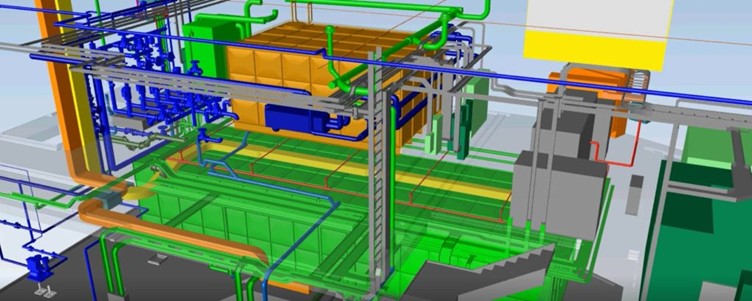Using 4D Planning and BIM to Enhance Your Project Capability
Increased project complexity and the growing ‘disparity’ between the plan and execution has led to one of the most promising developments in the architecture, engineering and construction industries: Building Information Modelling (BIM). 4D planning is a combination of BIM models with the additional dimension of time (planning). Recent studies demonstrate the use of 4D planning can enhance performance through better visualisation of the construction work, create a more accurate and detailed work plan, provide accurate quantities of time and resources for distribution and can even create better tenders. Additionally, our 2019 Global Project Controls Survey Report shows organisations using this technology are 3x more successful than those that don’t. So what is BIM and 4D planning and how can your business embrace these ways of working?
What is BIM?
Building Information Modelling (BIM) is a buzzword that you will often here but what does it actually mean?
Many believe that BIM is merely a technology or simple evolution of 3D design. However, BIM is actually a process; it is the entire process, across a project lifecycle, from conception to information management and 3D modelling (that is to say, not simple 2D lines but a virtual representation of each building element with specifications and unique characteristics).
BIM provides a way to achieve a single source of truth*, as everyone is working from the same model, accessing the same live data and collaborating, which therefore reduces the interfaces of different systems. In recent years, it has become an essential process for facilitating the integration between design, construction and use.
What is 4D Planning?

The increasing availability of BIM has facilitated the development of 4D planning, which combines 3D models with the dimension of time (planning). 4D planning enhances the way we visualise project information in comparison to Gantt charts which, for certain types of projects, cannot provide a complete view of all interactions and sequences of activities. It enables companies to visualise the project and all the events within, all along the schedule timeline.
What Are the Benefits of Using 4D Planning on My Project?
There are clear benefits of using 4D planning on projects, with organisations using this tool on a regular basis seeing 3x the level of success. For schedulers, planners and project managers alike, the use of 4D planning provides an exceptional tool to solve the problems which often occur during the construction phase. This includes trade flows, work conflicts, material laydown areas, schedule validation and clash detection, and all before the actual start of construction. The tool also enables better communication between various parties involved in construction and therefore reduces any misunderstanding from the start. With the programme objectives clear to all parties, project milestones can be more easily achieved, with a higher chance of the project being delivered on time and on budget. Therefore, this highly efficient on-site communication can also provide cost savings.
How to Start with 4D Planning
For a project to use 4D planning, 3D BIM must be used in the design phase. Each 3D model element must be then grouped according to the construction phase and then linked with planned activity in the programme. For example, a structural beam which will be executed across different phases must be divided into two sections to represent this. This granular level of detail is vital when integrating time dimensions to provide accurate planning capabilities.
Conclusion
In conclusion, 4D planning is a promising tool for the construction industry. It demonstrates clear benefits for project planning, which would not be possible with the more traditional methods commonly used in the industry. The implementation of 4D allows planners to create more realistic programmes and break down any miscommunication between what is planned and what is executed. High-quality BIM-based design and staff training is a worthwhile investment which will provide great benefits throughout the project lifecycle. BIM and 4D is not a trend, but a way of working that is here to stay. BIM and 4D planning is the future for project success.
To read the full 2019 Global Project Controls Survey Report, click here
* To read more about a single source of truth, read the blog here!
If you’d like to know how you can set up BIM and 4D planning on your project, or if you are looking to improve the capability of what you are already doing, get in touch!
You can call on +44 (0)20 7404 4826 or email us at info@logikalprojects.com
Or you can use the contact us form here.






